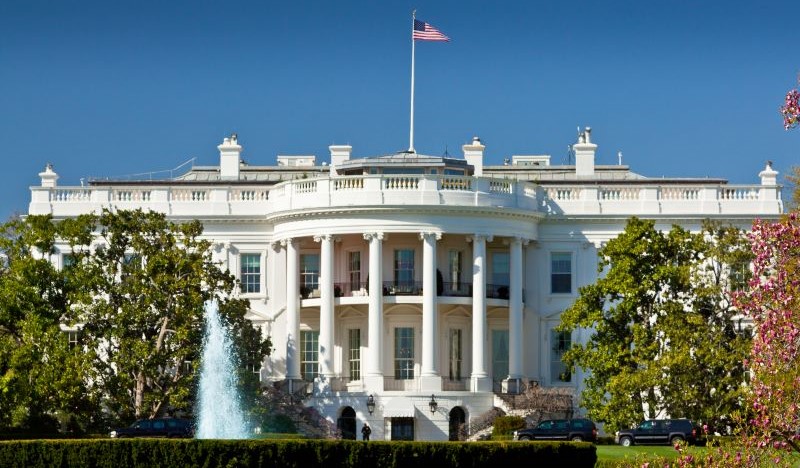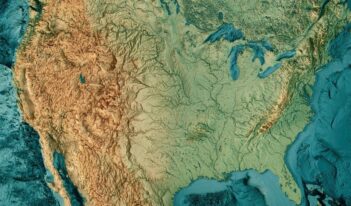
Judicial review does not easily address problematic exercises of presidential influence in agency rulemaking.
Presidential directives have long played a significant role in driving agency decision-making, but in his first months in office, President Donald J. Trump has arguably exercised his authority over agencies more forcefully and innovatively than any of his predecessors. Many of the President’s actions have inspired debates about the proper reach of executive authority. Some of the President’s most boundary-pushing directives have even prompted the question: Did the President direct an agency to violate the law?
Presidents exercise directive authority when they command executive branch agencies and officials to take actions within the authority delegated to them by Congress. These commands can come in the form of executive orders and memoranda, or, more informally, statements made in closed-door policy discussions with agency officials.
If the President directs an agency to violate the law, the directive might be an appealing target for challenge in court. But challenging problematic directives is not so simple, for two reasons.
First, procedural barriers will often stand in the way of challenging exercises of directive authority. Second, judicial review of final agency action inspired by a presidential directive will not easily address unlawfulness in the directive. Courts generally view presidential influence as an acceptable motivation for agency action, as long as the agency can justify its decisions, procedurally and substantively, under governing statutes.
Some of President Trump’s directives to agencies have raised questions about whether the agencies’ compliance would require them to violate congressional commands.
In an executive order, President Trump directed the U.S. Department of Energy to forgo legally required notice and comment before repealing a rule that defined the word “showerhead.” The President issued another order to all agencies directing them to repeal rules they deem to be unlawful, without notice and comment. The Administrative Procedure Act (APA) requires agencies to use notice and comment whenever they issue or repeal a rule. In directing agencies to forgo this requirement, did the President direct them to violate the APA?
The President’s directives to agencies to dramatically reduce or change the nature of their work have also raised legal questions. The President directed Russ Vought—the director of the Office of Management and Budget and acting head of the Consumer Financial Protection Bureau (CFPB)—to halt the CFPB’s issuing of new rules and the opening of new investigations. In the Dodd-Frank Act, Congress directed the CFPB to issue rules, engage with the public about consumer finance issues, and investigate banks and financial institutions for violations of the law. Arguably, the President’s directives amounted to instructing the CFPB to ignore an assignment it received from Congress.
In response to presidential directives, the U.S. Environmental Protection Agency (EPA) reportedly proposed cutting its research office and may cease requiring greenhouse gas emissions data from most polluters. The Clean Air Act, one of the statutes that EPA carries out, mandates that “adequate information should be developed with respect to the effect of chemical substances and mixtures on health and the environment.” The Act also directs EPA to conduct a “national research and development program to achieve the prevention and control of air pollution.” The President’s directive to eliminate research and data collection about climate change arguably conflicts with Congress’s instruction to EPA.
Arguments can be made as to why these and other directives from the President do not violate the law. The President has invoked the APA’s good cause exception, for example, to justify rescinding rules without notice and comment. The good cause exception allows agencies to forgo notice and comment when doing so would be “unnecessary,” and the President has stated that repealing what he views as “unlawful regulations” without notice and comment is surely unnecessary.
In addition, the Clean Air Act, the Dodd-Frank Act, and other laws that give agencies responsibilities, are susceptible to a wide range of interpretations. Agencies carry out their statutory obligations differently depending on who is in the White House. Perhaps President Trump’s directives on these issues constitute permissible policy directions, not commands to agencies to ignore congressional instructions altogether.
The President’s directives to agencies may still be more boundary-pushing than those of previous Presidents. And the questions remain: Did the President ask an agency to violate the law? If he did, what are the consequences? But judicial review of executive branch action is not designed to address these questions easily. Procedural barriers mean that challenging presidential directives is difficult. And the directives are not an issue when the agency actions they inspire are challenged, because courts permit presidential influence in agency decision-making.
Challenges to some types of executive orders, as has been seen already, may well be successful. An executive order directing agencies to bar the law firm Jenner & Block from accessing federal buildings was challenged and subsequently permanently enjoined, for example. But directives concerning agency rulemaking, which this essay focuses on, are more difficult to challenge.
Challenges to presidential directives do not easily satisfy certain procedural requirements for challenging executive branch action. The requirement that a challenged agency action be “final” may not be satisfied by an executive order, because it is merely an input—even if the primary one—in an agency’s decision-making. Moreover, the President is not subject to the APA’s requirements, so a presidential directive cannot set up an APA challenge as an agency’s action can.
The requirement that parties have standing to challenge executive branch action is also not often met by a presidential directive, because a party is unlikely to experience an injury that it can clearly link to the directive. For example, a challenge to President Trump’s first-term executive order in which he directed agencies to repeal two rules for every one they issued failed on standing grounds. In their attempt to establish standing, the order’s challengers tellingly pointed to the agency actions that would likely result from agencies’ compliance with the executive order. Those were the actions to which they could more clearly attribute their injuries.
A challenge to a problematic presidential directive may struggle to clear procedural barriers. Challenges to the rule that results from such a directive may seem to be a promising second option, but this too is difficult.
When an agency issues a rule, legal challenges often follow. The U.S. Department of Energy’s immediate compliance with the President’s directive to repeal a rule without notice and comment, for example, may invite legal challenge. And the EPA may face a legal challenge if it rescinds rules that require polluters to disclose their greenhouse gas emissions. When courts review agency actions, however, the presence of political inputs from the President or White House staff is usually not a problem, as long as the agency can provide adequate technical justifications to satisfy judicial demands for reasoned decision-making.
Presidents are likely to prefer that their involvement in an agency’s decision is not the center of courts’ review. Agency conversations with White House staff or records of internal agency decisions to act in response to a presidential directive are not usually available to a reviewing court, because agencies generally leave political influence out of the administrative record for judicial review. This makes it hard for courts to consider the role of presidential influence in an agency’s decision-making.
Although courts often lack the information to scrutinize the role of politics, political factors almost always lurk in the background of agency decisions. And courts do not usually have a problem with its presence, as long as the agency can provide adequate technical justifications. In assessing the adequacy of the reasons an agency has given for its decision, a standard of review that stems from the APA’s requirement to set aside agency action found to be “arbitrary” or “capricious,” courts scrutinize the technical, data-driven reasons behind an agency’s decision, instead of the political ones.
In FCC v. Fox, the U.S. Supreme Court upheld a U.S. Federal Communications Commission finding that so-called fleeting expletives on television were indecent. The Court acknowledged that the agency’s decision was motivated by a new presidential administration but concluded that the agency provided expertise-based justifications that enabled it to survive arbitrary and capricious review. In Massachusetts v. EPA, the Court identified political influence behind the EPA’s failure to regulate greenhouse gas emissions under the Clean Air Act, but it focused on the agency’s expert-based justifications. The technical justifications did not suffice, so the Court found that the agency had acted arbitrarily and capriciously. The problem with the agency’s decision was not its politically motivated nature, but the agency’s failure to produce adequate technical justifications.
Some of President Trump’s directives to agencies have inspired questions about whether he has commanded them to violate the law. These questionable directives will motivate agency actions, but such actions will survive as long as agencies can provide adequate expert-driven, technical justifications, which they will take care to do. The President’s directives will then often go unaddressed when the actions they inspire are reviewed by courts. And direct legal challenges to the orders are unlikely to succeed, because of procedural barriers.
The lawfulness of the President’s boundary-pushing directives remains an open question. So too then does the question: How untouchable is the executive’s directive authority?



